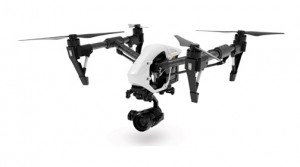
While groping around for a theme for my annual Zooming In missive, I stumbled upon the theory of “Organized Chaos.” Not wishing to malign my colleagues in our industry (craft), I turned to the centuries-old (but, mercifully, frequently updated) Cambridge Dictionary (University, UK) for its definition of this syndrome: “a situation in which there seems to be a lot of confusion and no organization, which makes you surprised that the results are good.”
Close, but no cigar. So, anyway, on with the chase. In totality, we’re all about image capture, storage, manipulation, dissemination, etc. The complicating factor is that there are many, often conflicting, ways to skin this cat (sorry, PETA).
The elephant in the room is, of course, the smartphone. It is the epitome of what was invented originally as the TPO (Time-Place-Opportunity) camera—the single-use film disposable. Most of us carry a smartphone around all the time, and we capture many times more images than we did (or dreamed of, or need?) even a decade ago.
Most such images are only ever reviewed on a smartphone, tablet or computer screen, but their image quality now trumps what most of us got used to with 4×6 prints. And when viewed on 4K HDTV sets, they give us a thrill long forgotten by all but slide-projector fans. (Don’t get me started on that morass; I have untold thousands of slides sitting in slide magazines, too costly to digitize.)
Smartphones, obviously, offer easy online storage and frequent software/hardware upgrading. Camera makers are slowly responding to (at least) the software side. The imaging chips now offer higher resolutions and, in some cases, smaller physical sizes. This happily allows for smaller lenses.

Interestingly, by using multiple lens sets, some of them at differing focal lengths, one can thus see an opportunity to offer virtual zooming, variable focus planes, etc. The Light L16 camera (light.co/camera) is an interesting case in point: it has 16 lenses, of which 10 can fire simultaneously; a 35–150mm (equivalent) true optical zoom; post-capture focus, depth-of-field manipulation . . . all in a body roughly the size and shape of a smartphone. Of course, the US$1,699 list price might be a deterrent, at least for me, but it’s an interesting step (forward?).
There are also easy ways to offer virtual zooming in current smartphones, especially as sensor resolutions continue to climb. But digital zooming will always suffer from the fact that it consumes pixels at the rate of the square of its “zoom” ratio.
Meanwhile back in the real world of “purist” cameras, lots of things are happening. Many of them are fabulous, some of which are merely interesting and a few of which are truly incredible (in the true sense of that word). The biggest “war” in this arena is between traditional DSLRs and mirrorless ILCs.
DSLRs and Mirrorless ILCs
When I took the original ILC plan to photokina 2004 on behalf of MicroVision (no pentaprism, electronic viewfinder, video capture, interchangeable lenses, smaller form factors), we got little reaction. This was partly because MicroVision’s then-EVF was monochrome and bulky. But it is pleasing to see now that mirrorless is among the bright spots in the camera world.
The sensor chips in mirrorless ILCs are getting higher in resolution and the electronic viewfinders are getting sharper. This means there is less need to stick to the DSLR format, at least for a growing number of amateur photogs. Years ago, a senior Sony exec lamented the cost and complexity (let alone noise) of an SLR mirror box, which needed hand assembly. So it’s interesting that today Sony makes some of the most appealing ILC cameras, perhaps drawing on its electronics background and abilities. It must have been harder for the smaller “mechanical” camera makers to make the transition.
One interesting effect of eliminating the mirror is that lens designers no longer have to allow for long BFLs (back focal lengths); the rear element in a traditional DSLR has to sit well forward so that the flipping mirror (pun intended) can clear the rear element of the lens. No more: lenses can sit closer to the image plane. Phew!
Smartphone Competition
The smaller form factors are, of course, critical in the struggle against smartphones. In a sense, though, the war is lost and camera makers have to (mostly) compete against smartphones and their ilk. Attempts to integrate phones into regular cameras seem to have failed from a market share perspective. Some such hybrids recall Maxwell Smart’s shoe-phone (right, Chief?).
As we all know, a big plus from the smartphone emergence has been the appeal of connected cameras. These offer such plums as online storage and frequent software updates. But the downside is exposure to hacking and viruses. One wonders if, in this age of cyber-warfare, the good guys can always protect the Internet against the forces of evil, whomever they may be. Connectivity is sure to prevail methinks. Roger that. But do also backup your images off line.
Action in Image Capture
Another arena of action in image capture is (wait for it!) the action camera segment. When I first met Nick Woodman at his father’s Sausalito home a decade or so ago, he had zero employees and an action camera using film (which Kodak declined to get involved with despite my prodding). Who knew that Woodman’s GoPro would eventually grow into such a success?
GoPro has attracted some fierce competition, but NPD says that as of late 2015, GoPro still had a 94% share of the U.S. action cam market. Some wannabes (especially in China) have simply made GoPro clones. Others have moved down market in size and price, or sideways, with philosophically challenged ideas such as Kodak’s SP360 model. Its very wide-angle image capture in effect pushes the image further away from the camera. And there’s the problem of protecting the front element of the lens from physical damage. Such vulnerability must surely harm the camera’s appeal as an action camera (personal opinion, not validated). The NPD numbers seem to back me up?
The stock market, as I write this, has fallen out of love with GoPro. It worries that the domestic market might already be nearing saturation—while admitting there is huge potential in international markets, let alone the drone segment. However, I see potential in product line extensions, such as tele-wide lens sets, which are cheap and more rugged than zoom lenses. And, of course, with drones. GoPro’s online presence, e.g., YouTube, surely solidifies their success.
Drones: Flying High?
Ah, drones. What a minefield. With up-to-now inadequate attempts by governments to regulate drone usage, idiotic drone meisters have been breaking the rules by flying in restricted airspace and nearly threatening to bring down commercial aircraft and/or their lesser ilk.
Let’s see what happens now, since beginning December 21, 2015, all unmanned aircraft pilots need to register their drones with the FAA and display those numbers on the craft. This, ostensibly, is so law enforcement can identify illegally flown drones.

The U.S. market is currently dominated by the Chinese HQ’d, Los Angeles-based DJI. Such numbers as 70% market share are being bandied around for DJI. The company chose (unwisely? wisely?) not to join forces with GoPro but to fight them. This no doubt factored into GoPro’s decision to offer its own drones in 1Q 2016.
Forget about plummeting aircraft, I’m more worried about falling drones that have run out of fuel/battery just above my head, or in front of my car on the freeway. Gee, I’m selfish! I see no easy solution to this problem, but some CES exhibitors are hoping to provide longer flight times (check out Intelligent Energy). The situation seems to be getting worse, as Amazon wants to use more drones to deliver parcels! Google is thinking the same way.
Robocars: A Boon for Camera Makers?
Ah, Google, aching to be the king of autonomous cars. Having worked for several automakers, and loving driving, I shudder at the thought of letting a robot have all the fun. But how great is it for camera makers? These robocars apparently will depend on multiple cameras on each car to guide and protect it.
Major camera makers have an opportunity to participate if they don’t prevaricate. Which I think they already seem to be doing. If I owned a camera maker, I’d be sucking up to as many carmakers as I could. Did I read that Panasonic is doing just that, or did I dream it?
I’d also have a person or two following what many universities around the world are doing in imaging R&D—many splendid inventions are under way.

Finally, a tip of my hat to Lomography, which has done miracles at reviving dead horses and profiting therefrom. They even still sell the famous/infamous Diana cameras that were on life support when I arrived in Hong Kong 43 years ago. And, they are having a hand in resuscitating the instant photography niche as well.
Lomography is the history of the film camera all bundled up onto one website, and its marketing is something to behold. The cameras are beautiful, too!
There, I’ve done it. I’ve cricked my neck. Sheesh!





